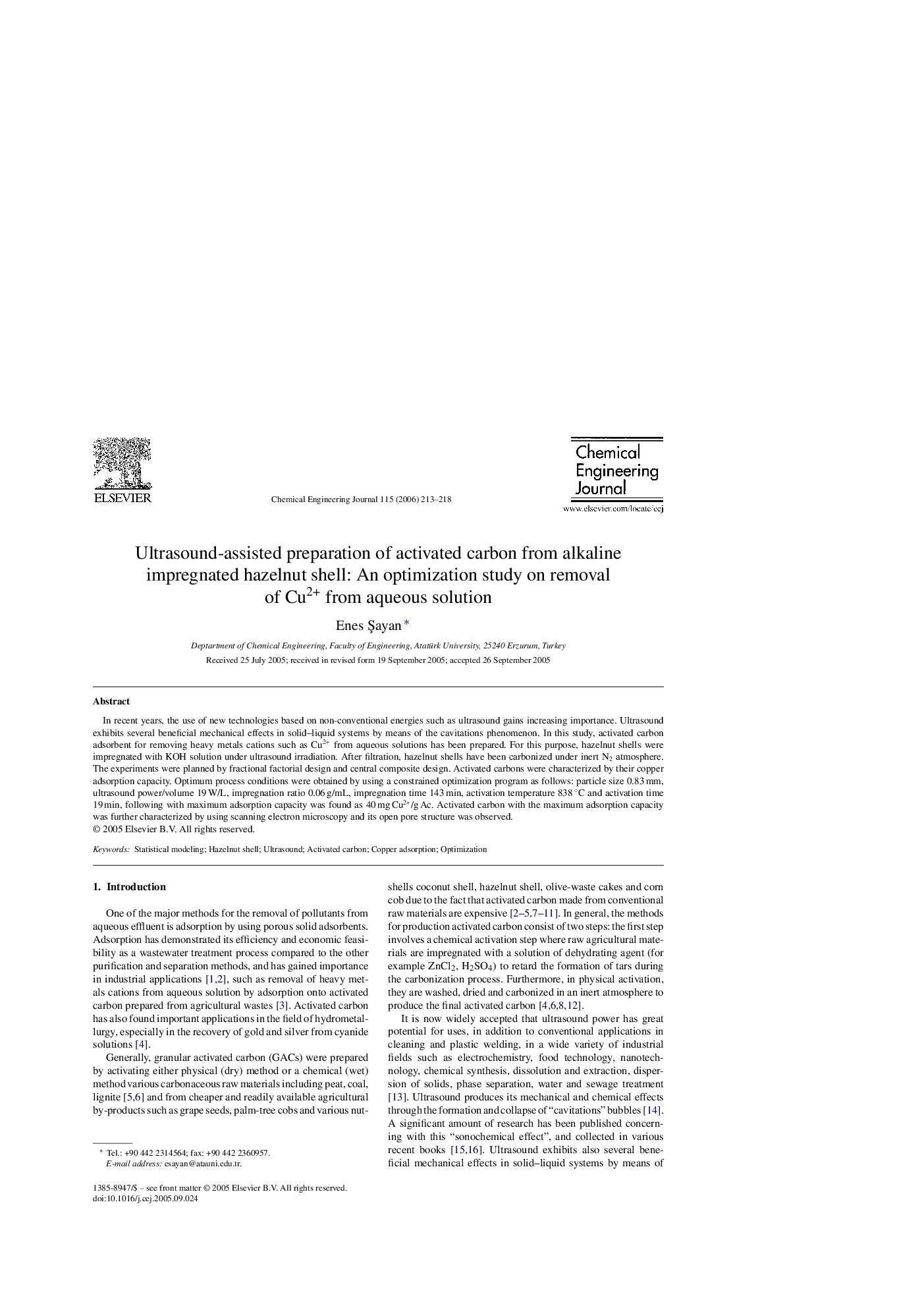| Article ID | Journal | Published Year | Pages | File Type |
|---|---|---|---|---|
| 154150 | Chemical Engineering Journal | 2006 | 6 Pages |
In recent years, the use of new technologies based on non-conventional energies such as ultrasound gains increasing importance. Ultrasound exhibits several beneficial mechanical effects in solid–liquid systems by means of the cavitations phenomenon. In this study, activated carbon adsorbent for removing heavy metals cations such as Cu2+ from aqueous solutions has been prepared. For this purpose, hazelnut shells were impregnated with KOH solution under ultrasound irradiation. After filtration, hazelnut shells have been carbonized under inert N2 atmosphere. The experiments were planned by fractional factorial design and central composite design. Activated carbons were characterized by their copper adsorption capacity. Optimum process conditions were obtained by using a constrained optimization program as follows: particle size 0.83 mm, ultrasound power/volume 19 W/L, impregnation ratio 0.06 g/mL, impregnation time 143 min, activation temperature 838 °C and activation time 19 min, following with maximum adsorption capacity was found as 40 mg Cu2+/g Ac. Activated carbon with the maximum adsorption capacity was further characterized by using scanning electron microscopy and its open pore structure was observed.
